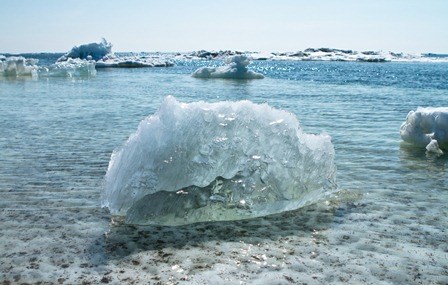How global warming and global cooling go hand-in-hand

Global warming usually predicts global cooling
In modern times, one is reminded of climate change on a day-to-day basis. Online, in-person, on posters, in magazines, everywhere.
Everywhere one looks there’s climate change. Some suppose climate change may even be a hoax. These people are not idiots as most presume. Most simply have a different interpretation of climate change.
To some, climate change is the rapid shift in climate; to others, it is simply any change in climate, no matter the impact of the change. With climate change comes two sides of the same coin: global warming and global cooling. Both bring different effects, but which is worse?
One side of the coin is global warming. With global warming comes ocean warming. A vast amount of CO2 is absorbed by the ocean. Because of this, sea surface temperature is causing a variety of things. This includes thermal expansion, which is when seawater expands, leading to sea-level rise.
Rising sea-levels can lead to coastal erosion. Coastal erosion can lead to the loss of natural barriers protecting the coastline and the loss of infrastructure near coastlines. Arctic erosion is another factor of coastal erosion, meaning, the warming of the Arctic Ocean.
Global warming is said to be a direct cause of climate change. Look at the way temperatures are rising, evaporation of water from the soil is increasing, rainfall is less frequent yet more severe and so forth.
There are, however, benefits to global warming. One benefit is that there are fewer deaths. In some regions, global warming will enable longer growing seasons and increased agriculture.
Other benefits include increased forest growth, increased vegetation in high northern latitudes and increased plankton biomass in the North Pacific subtropics.
On the contrary to global warming is global cooling. Global cooling is the imminent cooling of the earth. Currently, the world is in its Holocene epoch, which started around 11,650 calendar years ago.
This is the longest period without an ice age. Some believe we could be at the front steps of another period of global cooling, but humans are preventing it through human-induced climate change.
Global cooling brings severe risks to mankind. Agriculture becomes essentially impossible, leading to mass famine. The last decade-long cooling event was from 536-545 AD.
Dust veil, cold, famine and plague were documented in Byzantium and China.
Following the “Little Ice Age” that occurred from 1300 until around 1850, was the medieval warming period.
This period was from 950 AD to 1250 AD. During this time, grain crops flourished, alpine tree lines rose, many new cities arose and the population more than doubled, raising questions in regards to global cooling versus global warming. It should be noted, one often leads to the other, in a strange balance of life.
Global warming and global cooling are one and the same. As history shows, one often leads to the other. The Little Ice Age followed the medieval warming period, the younger dryas cooling period came after the late glacial interstadial, a period of warmth after the last glacial maximum.
Maybe it is not global warming itself to fear, but the climate change it hints at. As history shows, global warming may lead to global cooling, something detrimental to many forms of life on earth.
